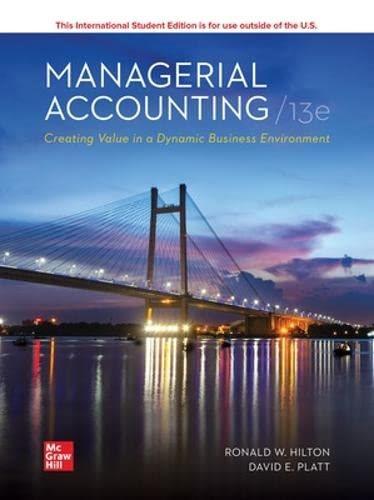Question
On Friday, July 9, 2021, Emily Griffith sat in her home office and pondered her investment strategy. During her MBA program, Emily learned that in
On Friday, July 9, 2021, Emily Griffith sat in her home office and pondered her investment strategy. During her MBA program, Emily learned that in an efficient market, investors should buy and hold the market portfolio, because no other portfolio can offer the same expected return at a lower risk. Since the S&P/ASX 100 is one of the most commonly used benchmark for the overall Australian share market, Emily has invested her childs educational savings in the Vanguard Australian Shares High Yield ETF, a mutual fund constructed to track the performance of the S&P/ASX100.
The S&P/ASX100 index consist of 100 stocks chosen for market size, liquidity and industry grouping, among other factors. This index is meant to reflect the risk/return characteristic of large-cap stocks. The S&P/ASX100 is a market value-weighted index, that is, each stocks weight in the index is proportionate to its market value. There are a number of financial products available to investors that are based on the S&P/ASX100, including Vanguards. Investors choose these index funds in order to provide themselves with a broad market exposure without buying 100 different stocks.
In order to achieve higher returns, Emily is considering changing her passive investment strategy to one that is more active. She wants to begin conservatively by adding carefully chosen stocks to her current equity portfolio. Based on a recent analysis forecast, Emily narrowed her search to the following two companies: JB Hi-Fi Ltd (JBH) and Cochlear Ltd (COH).
The last five years worth of monthly returns for the Vanguard Australian Shares High Yield ETF, JB Hi-Fi Ltd and Cochlear Ltd are provided in the Excel file attached. In addition to comparing the returns on the individual components of her portfolio, Emily also wants to fully compare the risk profiles of the two companies to that of the Vanguard fund. She wants to ensure that the expected return of her new portfolio will provide adequate compensation for taking on any new risky assets.
- Estimate and compare the returns and variability (i.e., annual standard deviation over the past five years of Hi-Fi Ltd and Cochlear Ltd with that of the S&P/ASX100 index). Which stock appears to be riskiest?
- Supposed Emily's position is 99% of equity funds invested in the S&P/ASX 100 and either 1% in Hi-Fi Ltd or 1% in Cochlear Ltd. Estimate the resulting portfolio position. How does each stock affect the variability of the equity investment? How does this relate to your answer in question 1 above?
- Perform a regression of each stock's monthly returns on the index returns to compute a beta for each stock. How does this relate to your answer in question 2 above?
- How might the expected return of each stock relate to its riskiness?
- In what stock(s) (if any) should Emily invest?
-



Step by Step Solution
There are 3 Steps involved in it
Step: 1

Get Instant Access to Expert-Tailored Solutions
See step-by-step solutions with expert insights and AI powered tools for academic success
Step: 2

Step: 3

Ace Your Homework with AI
Get the answers you need in no time with our AI-driven, step-by-step assistance
Get Started


